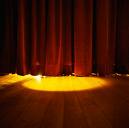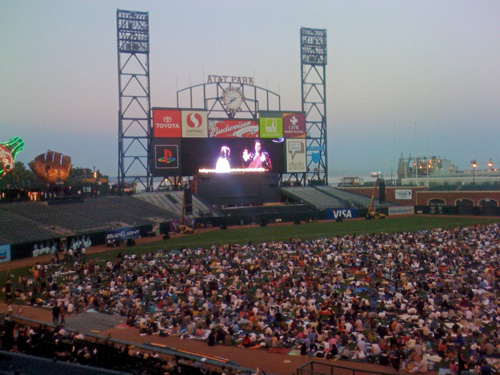
I downloaded the TwitterVision app for the iPhone last week. But I didn’t really get a chance to look at it until I had an in-between moment last night while visiting a friend’s new house up on a hill in Fairfax. Left to my own devices for a few minutes, I pulled out my iPhone and touched the TwitterVision icon. Suddenly I was seeing a stream of Tweets from people I didn’t know from all over the world. Seeing those personal moments, many of them in-between moments, brought a smile to my lips– and, of course, started a train of thought.
This kind of engagement brought to mind what’s variously been called furniture music, discreet music or ambient music. This kind of music has many origins, I first became aware of it through the music of Erik Satie and Brian Eno. Eno first discussed the concept in the liner notes to his album Discreet Music.
In January this year I had an accident. I was not seriously hurt, but I was confined to bed in a stiff and static position. My friend Judy Nylon visited me and brought me a record of 18th century harp music. After she had gone, and with some considerable difficulty, I put on the record. Having laid down, I realized that the amplifier was set at an extremely low level, and that one channel of the stereo had failed completely. Since I hadn’t the energy to get up and improve matters, the record played on almost inaudibly. This presented what was for me a new way of hearing music – as part of the ambience of the environment just as the colour of the light and the sound of the rain were parts of that ambience. It is for this reason that I suggest listening to the piece at comparatively low levels, even to the extent that it frequently falls below the threshold of audibility.
In the liner notes to Music for Airports, the concepts had become more refined:
Ambient Music must be able to accomodate many levels of listening attention without enforcing one in particular; it must be as ignorable as it is interesting.
TwitterVision strikes me as this same kind of engagement. It accommodates many different levels of engagement. There’s a sense in which it’s always on, and always changing, much in the way that generative music can create music algorithmically that can have a duration of 1 year or 10,000 years. It’s a kind of engagement that works very well for our in-between moments, the moments where the system puts us in a holding pattern. We provide our own hold music.
The pertinent correlation is the input that Twitter provides and the way that it’s incorporated into the loop. This area of exploration was opened by Terry Riley and his Time Lag Accumulator and by Brian Eno’s Frippertronics, signal delay processor. The cowpaths and paved roads from experimental music seem to point to the future layers that will be built out on top of Twitter. Stay tuned.
One Comment

